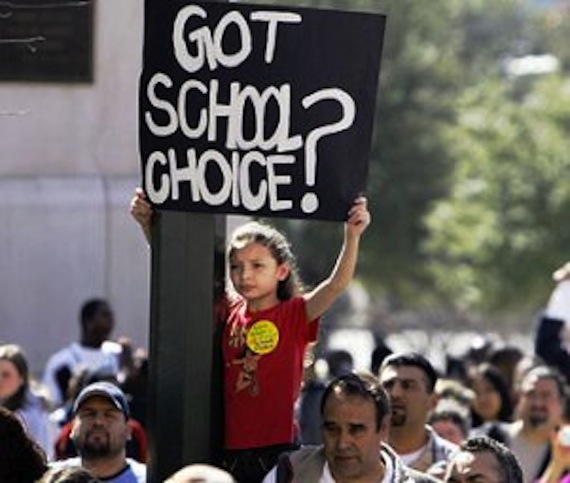Upon learning that average per pupil spending in the public education system is $9,000, recent Rasmussen poll takers overwhelming stated their dissatisfaction with the return on their investment.
It’s hard to blame them. Per pupil spending on education has tripled since the 1960s and increased 138 percent since 1985, but test scores and academic achievements remain stagnant and unchanged.
Noticing this trend, taxpayers and parents have found other options–an alternative to the status quo. Americans are used to variety and choice and thought the education system should offer nothing less.
“In our society choice is something we’ve all been used to,” says Jeff Sands, senior manager of school development for Northeastern and Central California for the California Charter Schools Association. “Now you can find schools that fit your needs and styles.”
The charter school movement has grown to 4,600 schools serving more than 1.4 million students nationally.
Charter schools have been a welcomed change for taxpayers, parents, students and those states and local governments who have adopted them.
What makes charter school different than public schools?
For one, it gives parents more options of where to send their child. Also, charter schools have more freedom from the many regulations of public schools. Charter schools allow students and teachers more authority to make decisions. Instead of being accountable to rules and regulations like public schools are, charter schools are focused on the students and academic achievement and upholding their charter.
“Charter schools are much more flexible in their spending and methods,” Sands says. “They can go with longer days and weekends. You could have a school with a strong focus on languages or arts or agriculture. You can use methods and interactions where the main focus is not on the results, but the results happen anyways.”
If charter schools are such a welcomed change, then why are 10 states still opposed and fight against letting them in?
When parents do not have a choice of where to send their child to school, they can become stuck in a union-run, public school monopoly that has no incentive to better itself. The only group that benefits from this design is the teachers unions.
“About 95 percent of charter schools are non-union,” says Mike Antonucci, director of the Education Intelligence Agency (EIA). This causes a lot of opposition from teachers unions.
“Unions lose members,” says Antonucci, whenever a new charter schools opens. “Every teacher in a charter school means one less union member and unions want more money. This can put a dent in union’s bottom line.”
Sands agrees and adds, “Charter schools have lots of resistance from unions and school boards.
Despite the strong opposition from unions and school boards, many charters are doing very well and opening new schools each year.
Since California approved a charter school law in 1992, it has seen a steady increase of new charters opening. Sands says last year more than 100 new charter schools opened their doors to new students and teachers.
As new charter schools open around the country providing new opportunities for students and parents, teachers also benefit from school choice.
“As testing becomes so core to school districts, teachers end up having to all teach the same thing at the same time–the whole objective is good scores,” states Sands. “This puts undue pressure on educators and removes them from the decision-making, professionalism of teaching. It is becoming very scripted.”
Charter schools give teachers opportunities to think outside the box, try new learning techniques and cater to children’s individual needs and wants. It would seem that this kind of freedom would be a welcome change for an educator–especially at a time when states are forced to trim their budgets often cutting programs and pulling funds from school districts.
If a charter does not live up to expectation or meet its requirements, then like all businesses, the charter would cease to exist. “Offering the best products and customer interaction is at the core of any charter school,” Sands comments. “Many of them understand that they are a nonprofit and have to do smart business.”
Charter schools face more responsibility and accountability than the public counterparts, but they also offer much greater opportunity.
In a free-market, choice fuels competition and produces quality and distinctive products. A growing dissatisfaction with public schools does not mean all public schools are bad and that all parents and students are ready to up and leave for a charter school. It means there is a need for choice and competition.
“Charters are not intended to replace public schools, they apply pressure and competition,” Sands concludes. “The objective is not to privatize education but to compete to make all schools better.”
Rebekah Rast is a contributing editor to Americans for Limited Government and NetRightDaily.com. You can follower her on twitter at @RebekahRast.

COMMENTS
Please let us know if you're having issues with commenting.